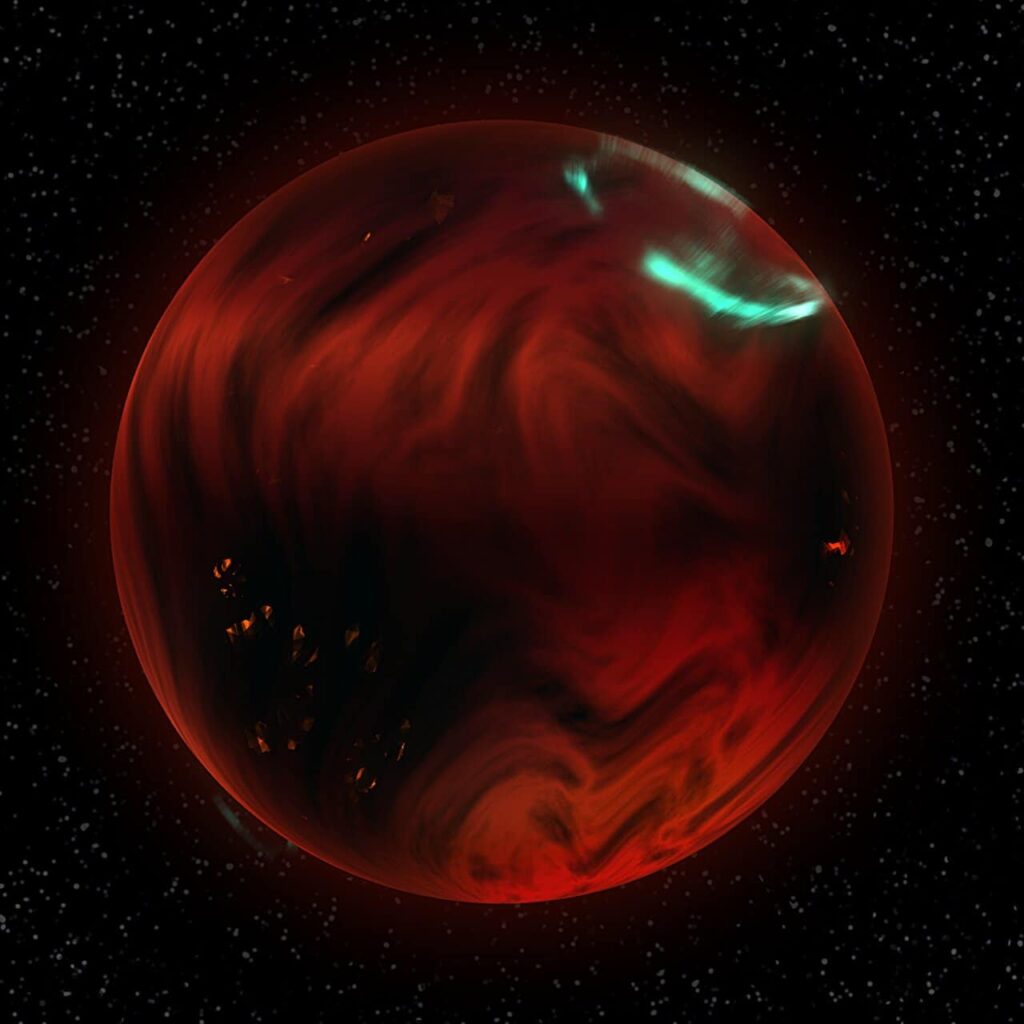
Drifting alone through space, about 20 light-years away, is a world that refuses to fit in. SIMP 0136 isn’t a star because it’s too small to ignite nuclear fusion. But it’s also too massive to be a regular planet. Astronomers call it a brown dwarf, though don’t let the name fool you — it has a mass 13 times that of Jupiter, hovering on the knife’s edge between planet and star.
Now, thanks to the James Webb Space Telescope (JWST), we’ve caught a glimpse of its wild, alien weather in action.
A Stormy Face Without a Star
Using JWST’s Near-Infrared Imager and Slitless Spectrograph (NIRISS), researchers led by Roman Akhmetshyn of McGill University in Canada mapped SIMP 0136’s shifting atmosphere in unprecedented detail. Over one full rotation, which lasts just 2.4 hours, the telescope watched tiny variations in its light. Those fluctuations revealed a complex, layered sky.
Despite the fact that right now we cannot directly image habitable planets around other stars, we can develop methods of learning about the meteorology and atmospheric composition on very similar worlds,” said Akhmetshyn in a press release.
The study, published in The Astrophysical Journal, found that SIMP 0136’s atmosphere is made of at least three distinct layers, each with its own clouds and chemistry. Some contain grains of forsterite (the same mineral found in Earth’s mantle), while deeper layers hide dense clouds of molten iron.
“We suspect numerous small-scale patchy clouds of different temperatures and chemistry, scattered across the globe,” said Akhmetshyn.
Another intriguing fact is that the data showed that SIMP 0136’s north and south hemispheres are not mirror images. “Although we couldn’t create a meteorological map of SIMP 0136, we determined that some atmospheric layers have clear signs of north-south asymmetry,” Akhmetshyn explained. That asymmetry suggests jet streams, vortices, or perhaps banded circulation patterns like Jupiter’s, but far more turbulent.
The Weather Forecast: Chaos
To decode what they were seeing, the team used principal component analysis, a mathematical technique for separating patterns in data, and then compared their results to a library of brown dwarf atmospheric models known as Sonora Diamondback. They discovered that no single model could explain the observations. Instead, at least three different atmospheric states were needed to reproduce what JWST saw.
That finding implies a dynamic, ever-changing sky where cloud decks form and dissolve across the globe in just hours. The study’s models indicate that deeper layers contain iron clouds under forsterite ones, with temperatures ranging from 1,000 to 1,300 Kelvin. These layers shimmer and shift, generating light curves that pulse in rhythm with the planet’s rotation.
Even more striking, the researchers found that SIMP 0136’s weather extends vertically. By mapping how light at different wavelengths varies over time, they created a rough 3D picture of its atmosphere. The lower levels are dense and hot, dominated by forsterite clouds. The middle layers contain bright spots where water vapor absorbs light, possibly marking zones of localized heating. The upper layers, thin and cold, contain carbon monoxide and water bands that trace the outlines of high-altitude winds.
The result is a portrait of a world where clouds don’t just move sideways — they churn and collide vertically, mixing minerals and gases in a chaotic dance.
What Can a Rogue Planet Teach Us?
Brown dwarfs like SIMP 0136 are cosmic laboratories for understanding exoplanets. Because they float freely through space, they’re easier to observe than planets that orbit bright stars. Their isolated glow lets astronomers study their atmospheres directly, without the glare of a nearby sun.
Understanding their weather also helps scientists interpret the fleeting signals we get from real exoplanets — those that briefly dim their stars as they transit. If JWST can detect such intricate atmospheric behavior on a lone, faint brown dwarf, similar techniques could soon reveal weather systems on giant exoplanets, even those many light-years away.
As Akhmetshyn and colleagues note in their paper, JWST’s stability “opens a new window into brown dwarf atmospheric dynamics.” The data are so precise that the team could even detect tiny Doppler shifts (the changes in wavelength caused by moving clouds), hinting at the viability of future techniques like Doppler tomography to map winds across alien worlds.
Étienne Artigau, a co-author and astronomer at the Université de Montréal, described SIMP 0136 as “an ideal target to study brown dwarf atmospheric variability.” Its rapid rotation and brightness make it a benchmark for understanding the boundary between stars and planets.
For now, SIMP 0136 remains a lonely traveler — a “free-floating planet,” as some call it — drifting through the constellation Pisces. But in its storms and shifting clouds, astronomers are beginning to realize that weather on other worlds can be a lot more chaotic and interesting than anyone thought.

